Top Client Meeting Venues in Singapore
How well a client meeting will go has a direct impact on how productive and successful the company is as a whole. Ensure that you represent your company in the best light possible by holding your meetings in the best client meeting venues Singapore has to offer!
Space99
Unique Event Space Rental Singapore
Jalan Besar, Kallang, Serangoon
House of Offline
Multifunctional Event Venue for Rent Singapore
Bendemeer, Jalan Besar, Lavender
Host
Instagrammable Event Space Singapore
River Valley
Social Bar & Bistro
Private Restaurant for Events Singapore
Raffles Place
Level Up
Popular Party Venue Singapore
Clarke Quay
Major 99 @ Kallang
Trendy Event Space Rental Singapore
Bendemeer, Jalan Besar, Kallang
Client Meeting Rental Guide
No matter what your job is at your company, dealing with clients could be one of the most important things you do there. Employers and senior leadership often look for people who know how to meet with clients in a professional and strategic way. One of the most important things that determine how well a meeting goes is how well the participants behave. If you want to show that you are professional and a good leader, one way to do this is to follow client meeting etiquette.
Client meeting etiquette you should follow
When people talk about "client meeting etiquette," they mean how to act in a professional and polite way during a meeting. Meeting etiquette is vital for a number of reasons. Proper business meeting etiquette makes relationships stronger because it makes the clients feel more appreciated, which in turn leads to better relationships at work. To make sure you have the best client meeting etiquette, remember these general rules:
- Be punctual
When you get to meetings on time, it shows that you are mature, professional, and polite. It would help if you made sure that the meetings go smoothly, and ensuring that you don't show up late is an integral part of the process. When you're not at work, it might be okay to be a few minutes late to a social event or appointment. However, in a professional setting, it's often expected that people will be on time. It's best to get there a few minutes early, so you have time to find a seat and get comfortable before the meeting starts. If you're going to be late to a meeting, it's appropriate to apologise to everyone there, then take a seat and focus on the conversation when it starts. - Come prepared
If there will be a lot of people at the meeting and there are a lot of things to talk about, you should send out the agenda through emails in advance. It will also help if you bring something to take notes with. - Dress appropriately
No matter what your company does, you should dress appropriately when attending a client meeting. Suits and dresses are some of the most common attire during client meetings. If you want the meeting to have a more casual vibe, you can inform the attendees to dress casually, often in the form of collared shirts and dresses. - Make sure that people hear you
When you talk during the meeting, you should speak loud and clear enough so that everyone can hear you. This gives off an air of confidence and makes you look more professional. Also, it makes sure that everyone hears your ideas and can respond in the right way. If you have to keep repeating yourself or if someone else doesn't understand what you're saying, the meeting may not go as well as it should. - Listen to what is being said and participate in the discussion
The success of a meeting is directly related to how much people pay attention to what others are saying and participate in the conversations that follow. You can show that you understand what the other person is saying by nodding, paraphrasing what they are saying, showing that you are worried, or asking specific, in-depth questions. Active listening shows the other person that you care about what they have to say and want to hear what they have to say. It also helps you stay focused and give responses that are more meaningful. - Avoid interrupting
Sometimes, conversations at business meetings can be so exciting and emotionally charged that everyone wants to say something. The best thing to do is to wait for your turn to talk and let others finish their thoughts before joining the conversation. If you are worried that you might forget the most important things you want to say while you are waiting, you should write them down. But you should try to keep listening to the conversation even if you have to write. - Keep track of the agenda
Sticking to your agenda is the right thing to do in a business setting since it cuts down on time wasted on side conversations. Client meetings sometimes get off track, but it helps if you stay on topic and try to keep the meeting productive. If you notice that the conversation has moved away from the topic at hand, do what you can to get it back on track. - Ask questions
The best time to ask questions is during the presentation, especially when your question is related to what the presenter is talking about. It is polite to wait until they stop talking before raising your hand. They will probably also give people in the audience chances to ask questions at different points in the presentation. It would be best if you didn't wait until the very end of the meeting when it's time to leave to ask all of your questions. If you leave the meeting with questions that weren't answered, you can either stay and ask them in private or send an email to the person in charge of the meeting. - Put away your gadgets
Many people keep their phones on the table during meetings, which can be distracting if the phone suddenly rings, buzzes, or lights up. After you've turned off or muted your device, put it somewhere that others can't see it, like a purse, briefcase, or pocket. You might want to bring paper and a pen so you don't get distracted by technology and can take notes. If, on the other hand, you need to look at the information on your laptop, you should politely inform the party that you will be using it. - Eat and drink appropriately
Most of the time, drinks like water and coffee are fine to drink during meetings. Since the smell of food and the sounds of chewing can sometimes be distracting to those around you, it might be best to save the snacks for after the meeting. However, if you're at a lunch or dinner meeting, be kind to the people around you and eat quietly. On top of that, you should always clean up after yourself and put the seats back where they were before.
You have probably noticed that we mentioned the term "agenda" a lot in the guide above. It is crucial to have a well-planned agenda during a client meeting. Making an agenda for a sales meeting with clients is a simple way to have direct control over how the conversation goes. Having an agenda for your client sales meeting may help you stay on track and make sure that all of your main points are covered. Putting together a schedule for a sales meeting is not too hard. Here is a list of five things you should include in your agenda for a sales meeting with client.
- The client meeting's goal
It might be evident that the goal of a sales meeting with a client is to make a deal. But is it a goal that can really be reached through this conversation? If you are still in the early stages of the deal, you may need to break the final goal into several smaller goals that are easier to reach.
Look at your sales funnel and use what you see there to figure out where you are with this particular client. What do they need to do to move on to the next step? The answer could be more information about what you have to offer, proof that you can give them a solution that fits their specific needs, or help to come to a decision and make a purchase.
During the client meeting, your goal should be to move the potential customer to the next step in the sales process. By setting smaller and more specific goals, you can make sure that you are actually helping your client and not just trying to get their money.
For example, you might tell your client, "By the end of this meeting, I'd like to know more about the problems you're having so that I can offer a better solution." Having goals helps you stay on track. Without clear goals for the meeting, both you and your client will be left wondering what was actually accomplished. - A loose timeline
It's easy to lose track of time when you're meeting someone. If you don't have a plan, you might run out of time before you can get to the main point of the conversation. It is essential to have a general guide to follow to make sure that you cover your most important topics, which may also help you avoid wasting time.
Make a bullet-pointed list of the things you want to talk about at the meeting and bring it with you. The next step is to give each of the topics a certain amount of time. It's not a big deal if not all of your points are given equal time. Just make sure that the length of time you spend on each point is in line with how important the issue is.
If you only have a half hour to spare, check to see if your plans can fit into that time frame before moving on. Having a general timeline helps you stay on track, which is especially helpful when you have a lot to talk about. - A time to work on making your relationship stronger
It's possible that sales meetings with clients would feel like a business, business, and more business. But when it comes to making a purchase, clients will want to do business with a provider they can trust and who makes them feel like they really care about what is best for them.
If you start your sales meeting with a hard-sell pitch, your customer may not want to do business with you at all. If you chase after them too hard, you might push them away. No matter how long you've been working with this customer, set aside time to get to know them better. Include some time at the beginning of the agenda to ask about the person's specific needs, their day, and, if they feel comfortable, parts of their personal life, like whether or not they have children and where they are from.
Take advantage of the fact that you are learning more about your customer so that you can keep talking. Remember the little things about them, like their favourite football team or the number of their children, to show them that they are more than just a number. Getting to know your customers might help them remember their time with you. Customers will feel more comfortable with you and want to talk more if you can talk to them about something other than business or the transaction. - A time for questions
When making the schedule for the next client meeting, you might be tempted to fill every spare minute with something. After all, you don't want to look like you're not ready or let awkward silences happen.
When you use up all the time for your meeting by talking and giving presentations, your customer won't be able to talk to you. There's a chance they have their own questions, worries, or ideas they'd like to share with you.
Make sure you schedule enough time for the client to ask questions and talk during your meeting with them. You can finish this up at the end of the meeting or do it in a way that won't interrupt the flow of the discussion. Setting aside time for your client to talk makes sure that both of you get a chance to talk. This makes the meeting more productive and gives you the chance to change your pitch based on the questions your client asks. - Setting the next client meeting
Figure out what you or the customer needs to do next before you leave the meeting. This will let you move the deal forward as quickly as possible to the next stage. In the last few minutes, you should take some time to remind the customer of what they can expect from you and vice versa. Make sure you and the client are on the same page and set a schedule for when the next steps can be taken.
Where can I find the best client meeting venues Singapore?
You can book various venue types that are suitable for client meetings via Venuerific. Some of the popular and top client meeting venues Singapore has to offer are found in Bugis, Chinatown, City Hall, Jalan Besar, Orchard, Raffles Place, and Tanjong Pagar.
What are the best client meeting venues Singapore?
The best venues for client meetings should have a quiet and relaxing environment, a convenient location, as well as great food and drinks. You can find all of these in venues such as cafes, meeting rooms, restaurants, rooftop venues, and unique venues.
How much does a client meeting venue rental cost?
The cost of hiring a client meeting venue depends on your budget, the number of guests, and the location. For instance, booking a packaged meeting room in Venuerific costs between $80 and $2,500. Renting a restaurant space can cost $25 to $5,000, depending on the number of guests. Nevertheless, make sure to set aside a budget of at least $10 to $181 and above per pax.
Book the best client meeting venues Singapore has to offer
Ready to book the best client meeting venues in Singapore? Use Venuerific's smart filter to customise the venue results as per your preferences and requirements. Choose your desired venue and book it within a few clicks!
Explore Relevant Client Meeting Event Services in Singapore
Catering
View vendorsEvent Rentals
View vendors
 Malaysia
Malaysia
 Indonesia
Indonesia
 Philippines
Philippines
 Hong Kong
Hong Kong



























































 Whatsapp
Whatsapp Telegram
Telegram Talk to Venuerific Team
Talk to Venuerific Team